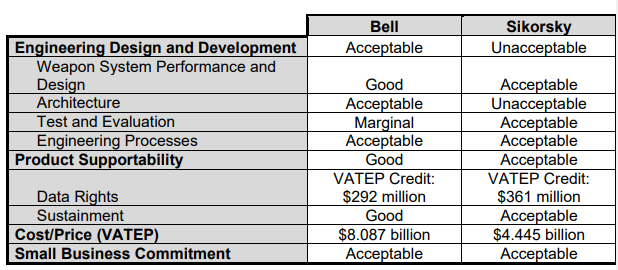What LMCO/Sikorsky
is not telling you, is that most of the layoffs are coming from the Navy side of rotorcraft as there are no more MH/SH-60 being built for the U.S. Navy. Likely this would have happened regardless of the U.S. Army FLRAA decision.
Sikorsky lays off 'limited number of positions' in Stratford
A spokesperson for Lockheed Martin said in a statement that the company made the “difficult decision to reduce a limited number of positions.”

www.fox61.com
A spokesperson for Lockheed Martin said in a statement that the company made the “difficult decision to reduce a limited number of positions.”
Lockheed Martin’s Sikorsky Aircraft has begun laying off some employees from its plant in Stratford and these cutbacks are attributed to the company’s loss of a multi-million-dollar U.S. Army contract, FOX61 News confirmed.
A spokesperson for Lockheed Martin – who is the parent company for the Sikorsky – told FOX61 News in a statement that the company made the “difficult decision to reduce a limited number of positions.”
The spokesperson did not specify how many employees had lost their jobs in Stratford but said the cutbacks were part of an already announced elimination of 800 jobs in the Rotary and Mission Systems division at Lockheed Martin.
All Sikorsky locations, including Stratford, have positions that are under review during this process, the spokesperson said.
“We intend to retain as many as possible who can fill our open business-critical positions in our Rotary and Mission Systems business segment and across Lockheed Martin and will continue to hire for roles that are required to support our customers’ urgent national security missions,” the spokesperson said in a statement to FOX61 News.
New Haven Biz was the first to report the layoffs.
Sikorsky, who had built the UH-60 Black Hawk for the U.S. Army since the 1970s, was blindsided in late 2022 when the Army decide to reject the company’s bid to build long-range assault aircraft. Instead, the reportedly $1.3 billion contract was given to Texas-based Bell, a Textron company.
The company has formally challenged the decision and filed a complaint with the U.S. Government Accountability Office (GAO) to review the Army’s decision on the Future Long-Range Assault Aircraft contract.
In a statement when it announced its decision, the Army said the decision-making process was “deliberate and disciplined.”
According to New Haven Biz, Sikorsky makes up a good portion of Lockheed Martin’s Rotary and Mission Systems workforce, with both salaried and union workers at locations across Connecticut.
It reported – citing a union official – that no unionized Sikorsky workers lost their jobs due to the layoffs. However, they said the union had agreed to the retirement of 250 members this year, followed by 150 members and 100 members over the next three years.




